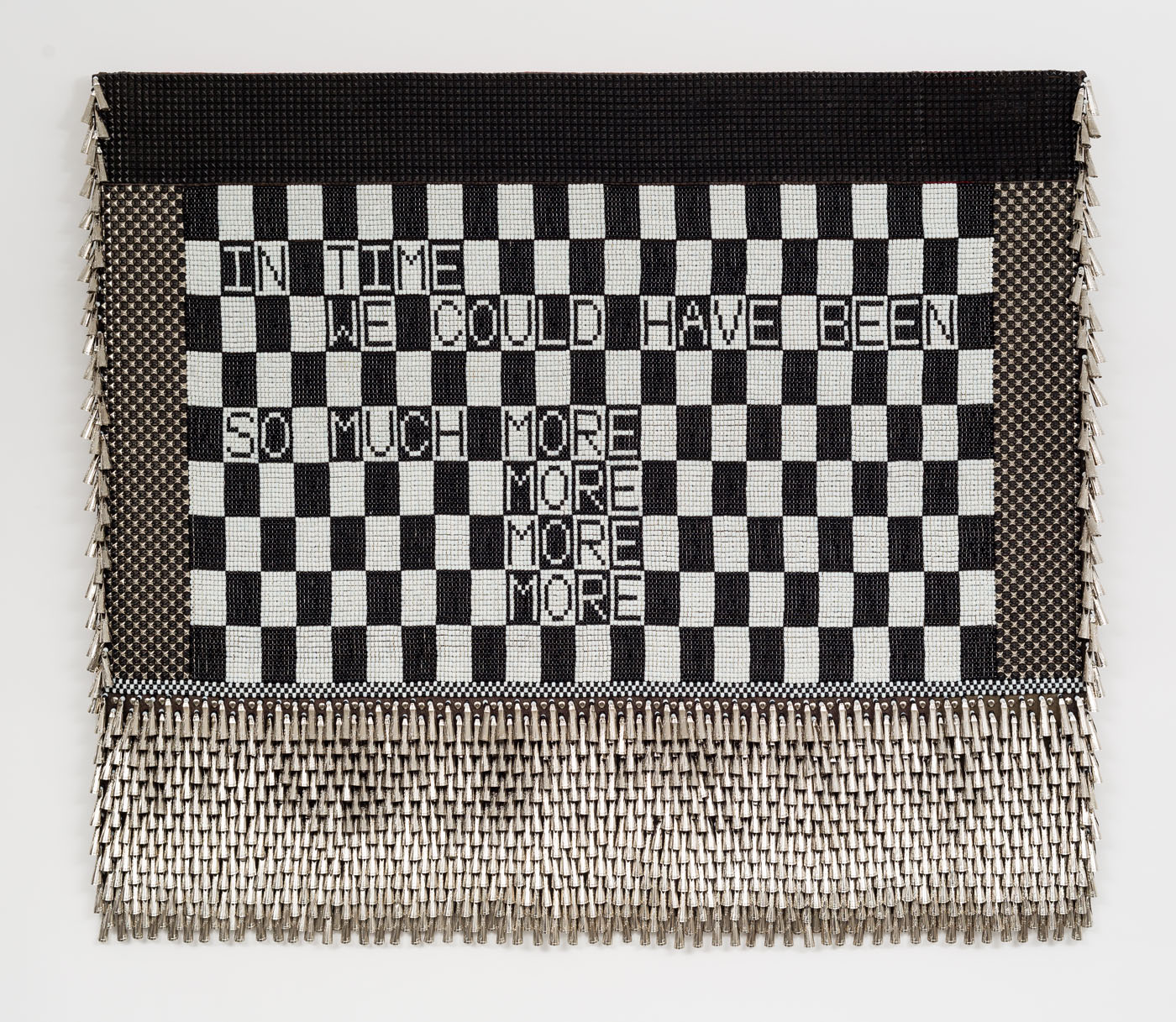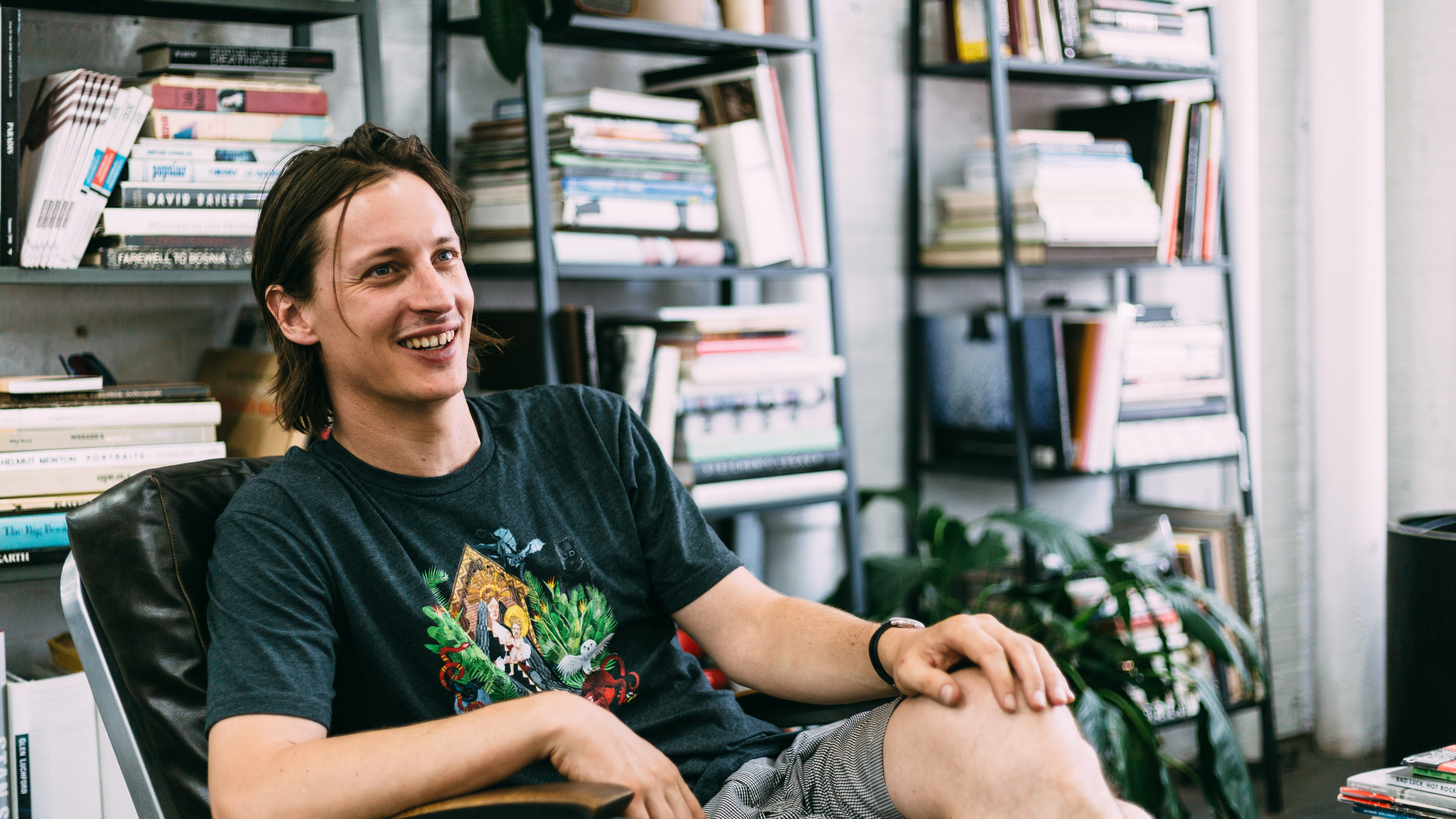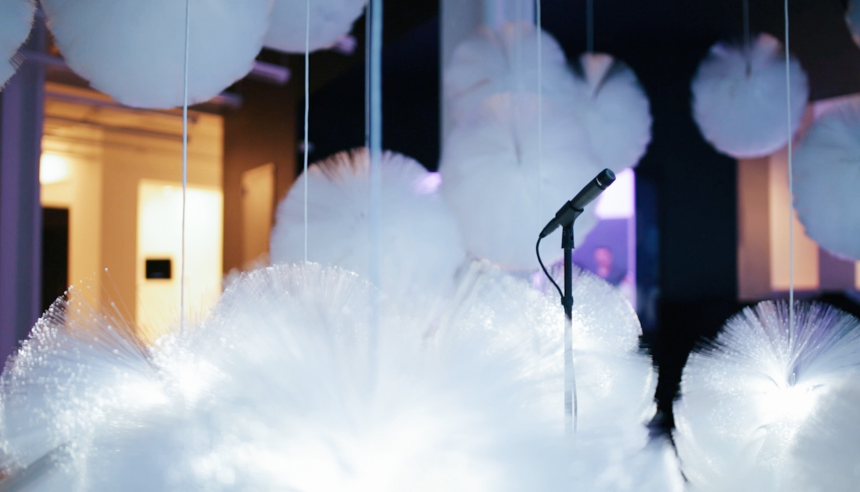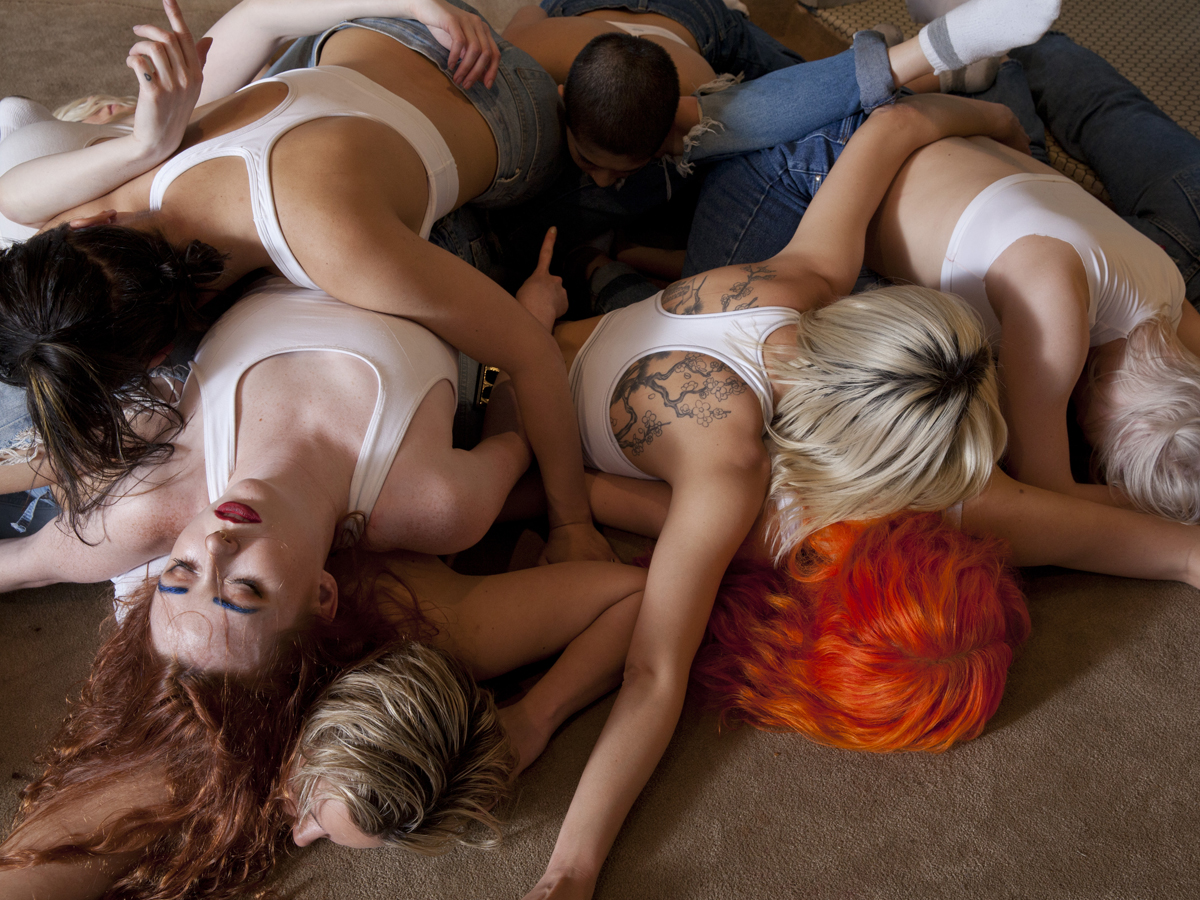Jeffrey Gibson is frequently defined as a “Native American artist,” but there’s something about that term that doesn’t accurately capture his goal as an artist. Though he is a member of the Mississippi Band of Choctaw Indians and half-Cherokee, Gibson did not grow up in a “traditional” Native community and is vocal about not really identifying with this heritage until later in adulthood. His work is currently the subject of a solo show at Marc Straus gallery, in which his paintings and sculptures “intermingle more traditional Native American art with contemporary art and culture.”
Gibson grew up the child of a military family, moving from city to city, country to country, in locations as extreme as Germany, and South Korea. He attended the Art Institute of Chicago and worked at the Field Museum, where he assisted in upholding NAGPRA (Native American Graves Protection and Repatriation Act). This experience allowed him to communicate with tribes people and help identify frequently mislabeled items and learn their true cultural origin. He then studied at The Royal College of Art in London, a time period that had a profound effect on his personal and artistic maturation. For the first time, he experienced the sense of belonging to a community in the London music and club scenes. The positive cathartic experiences he gained would later become a guiding source of creative strength.
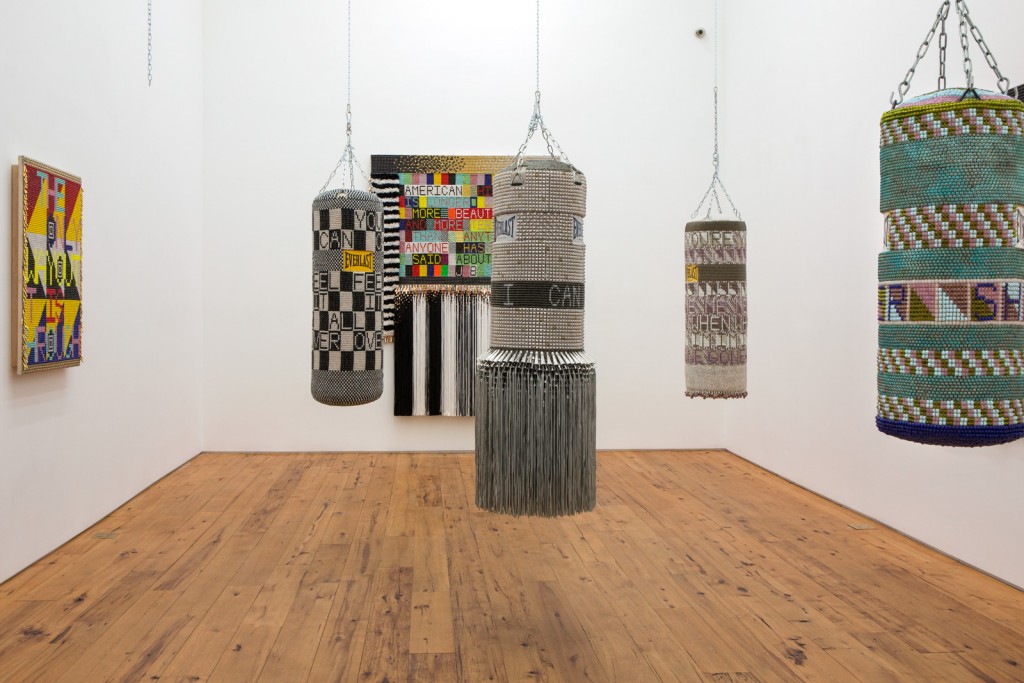
In 1999, Gibson moved to New York to pursue his artistic career and began to feel lost in the sea of creative hopefuls. It was during this time that he decided to seek counseling and explains, “All of these issues around race, class, entitlement, and family history came up, and I walked away realizing that because I had been repressing all of this anger and expression in my life, there was a real disconnect between my mind and body.” At the suggestion of a therapist, he began seeing a physical trainer that had him start working with punching bags, an object that would soon become the focal point of his artwork.
In 2005, Gibson received a grant from the Creative Capitol Foundation to travel and meet with traditional Native American makers around the country and observe their craft and culture. “Their choice of what they wore, what they make and how they make it, the communities they contribute to, and the way they view community, this is was really what I’d been searching for.” He began decorating punching bags in the styles and materials of the various tribes he had visited as a means of diffusing his own anger and personal struggle with identity.
The current exhibition at Marc Straus contains many of these punching bags, a series of 30, which each possess their own intricate personality. The materials used are sourced from a variety of sources ranging from the Native American Pow Wow circuit to reproduction jingle cones made in Taiwan. For Gibson, it’s not about attempting to recreate tribal techniques, patterns, or processes, it’s about channeling the meditative and healing experience achieved in the ritualistic craft process.
Another addition to the exhibition are large beaded tapestries that feature song lyrics or phrases that carry importance to the artist. Years prior when observing Native tribes, Gibson discovered the importance of a community’s elders and found his guiding equivalents were the words of gay disco icons like Grace Jones and Boy George. Through these words, Gibson makes the most direct reference to the historic struggles of his ancestors with lyrics like the Culture Club’s “In Time We Could Have Been So Much More” or 13th Floor Elevators song “You’re Gonna Miss Me When I’m Gone.”
Modern geometric paintings on rawhide add a final punctuation to a body of work that melds contemporary and Native references in an effect that has become a focal point of the discussion of contemporary Native American Art.
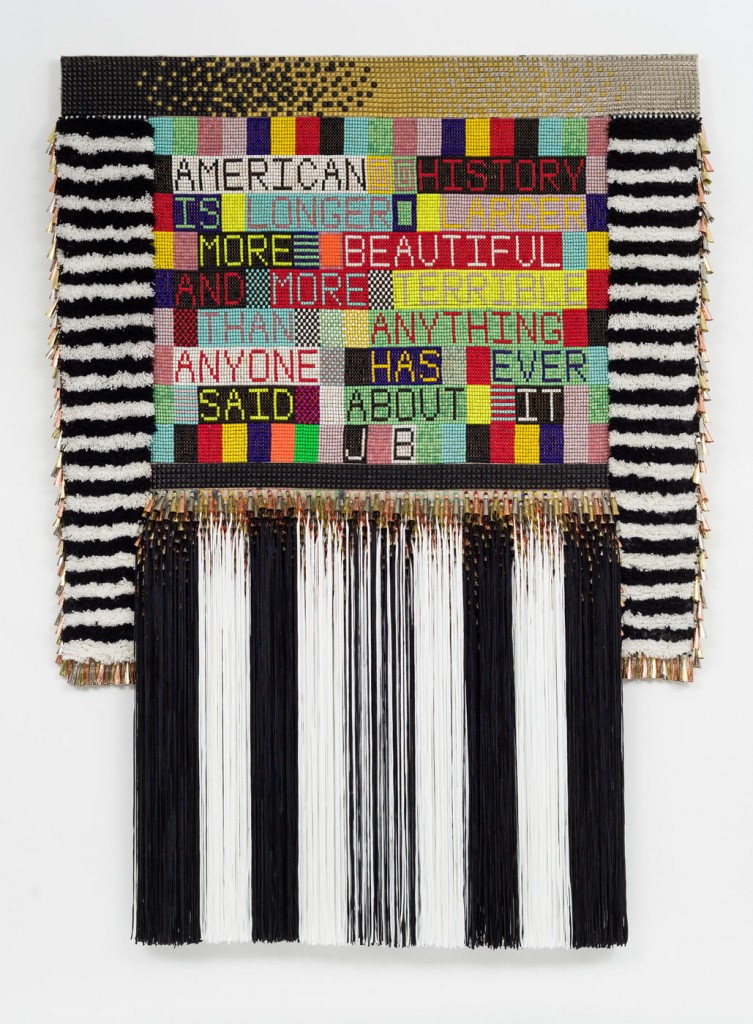
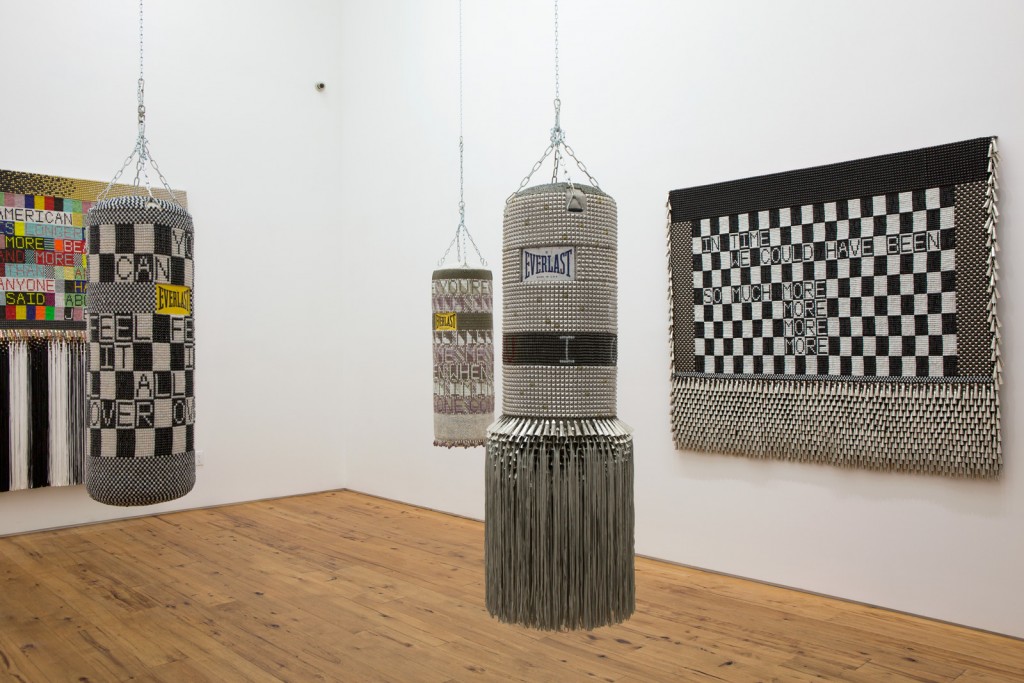
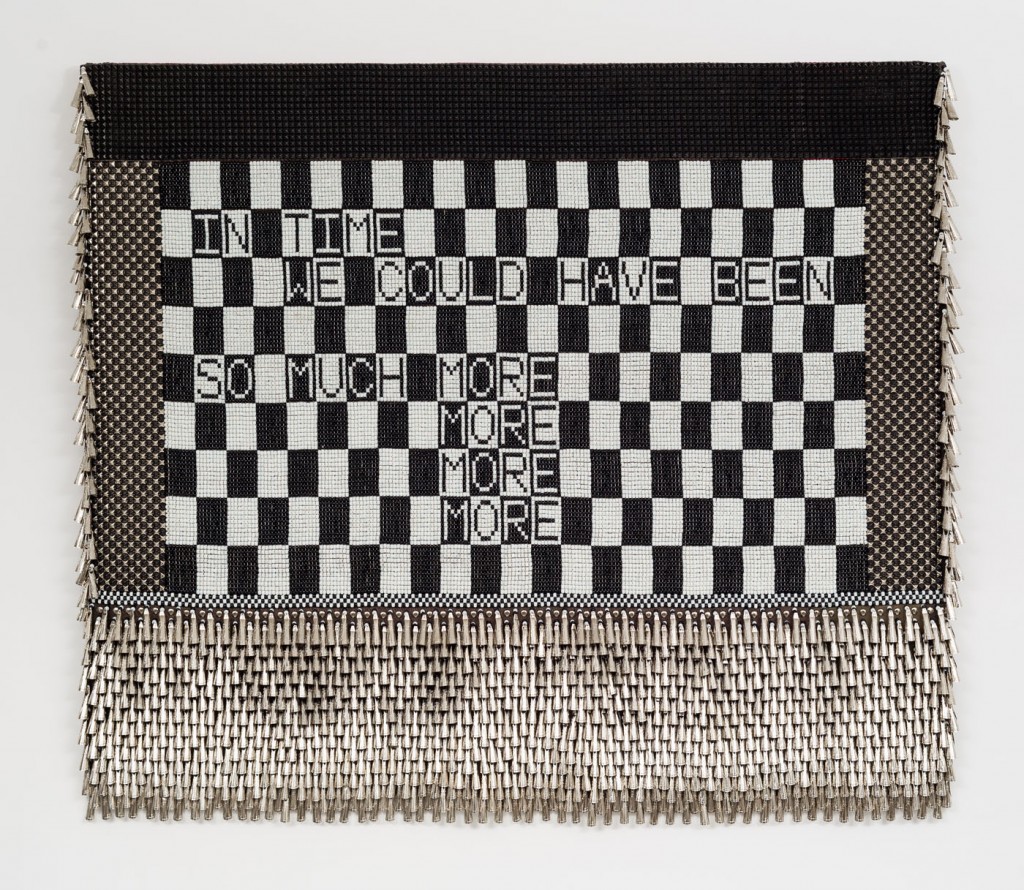
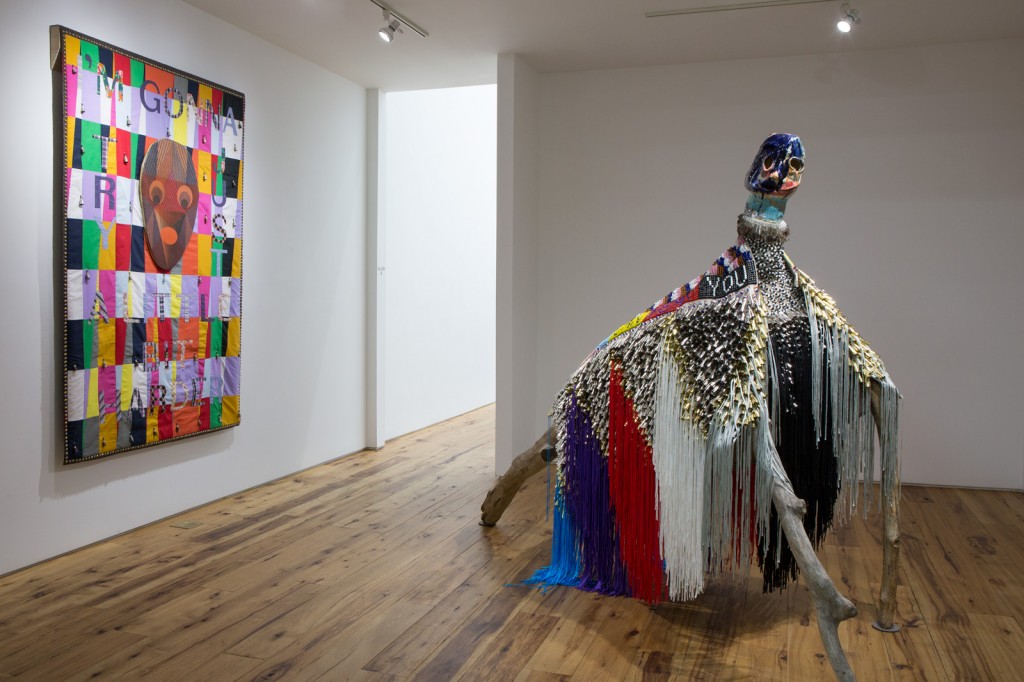
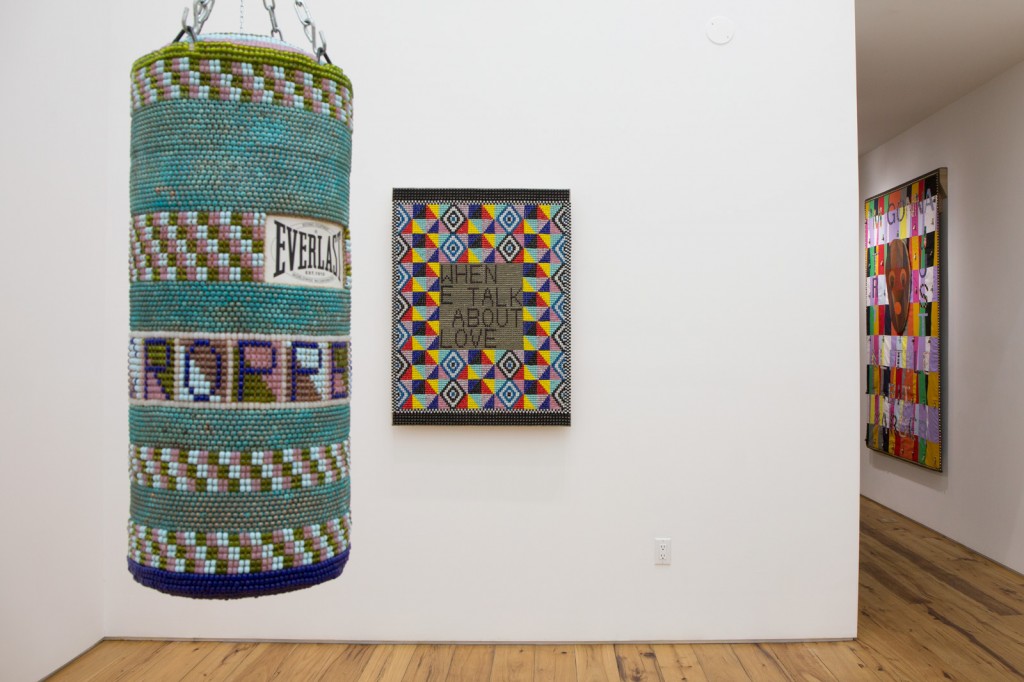
Academia and cultural discourse aside, the nurturing community that Gibson has created among his assistants in his Hudson, NY studio is the truest testament to his artistic goals. It is a communal environment of teaching and learning, and generally the best example of an artist/assistant relationship I’ve experienced yet.
All Images courtesy of Jeffrey Gibson and Marc Straus Gallery.
Like this article? Check out our video on multi-media artist Sara Rahbar, or other original videos.


